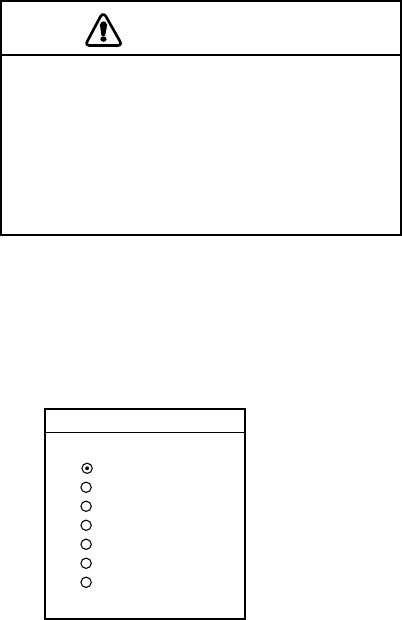
3. RADAR OPERATION
3-42
3.25.8 CPA/TCPA alarm (ARP)
When the predicted CPA of any target becomes smaller than a preset CPA alarm
range or its predicted TCPA less than a preset TCPA alarm limit, an audio alarm
sounds and the speaker icon (red on the color model) appears. In addition, the
target plot symbol of the offending target changes to a triangle and flashes
together with its vector. You may silence the audio alarm with the [CLEAR] key.
Press the [ALARM] key and the message “COLLISION ALARM” appears. Press
the CLEAR ALARM soft key to acknowledge the alarm. The flashing of the
triangle plot symbol continues until you intentionally terminate tracking of the
target. The ARP continuously monitors the predicted range at the Closest Point
of Approach (CPA) and predicted time to CPA (TCPA) of each track to own ship.
This feature helps alert you to targets which may be on a collision course with
own ship. However, it is important that gain, A/C SEA, A/C RAIN and other radar
controls are properly adjusted and the ARP is set up so that it can track targets
effectively.
CPA/TCPA alarm ranges must be set up properly taking into consideration the
size, tonnage, speed, turning performance and other characteristics of own ship.
CAUTION
The CPA/TCPA alarm should never be
relied upon as the sole means for detect-
ing the risk of collision. The navigator is
not relieved of the responsibility to keep
visual lookout for avoiding collisions,
whether or not the radar or other plotting
aid is in use.
Follow the steps shown below to set the CPA/TCPA alarm range:
1. Press the [MENU] key followed by the ARP SETUP soft key.
2. Operate the cursor pad to select CPA.
3. Press the EDIT soft key to show the CPA window.
CPA
▲
▼
OFF
0.5nm
1nm
2nm
3nm
5nm
6nm
CPA window
4. Select a CPA limit with the cursor pad.
5. Press the ENTER soft key. The ARP SETUP menu reappears.
6. Press the cursor pad to select TCPA.
7. Press the EDIT soft key to show the TCPA window.


















